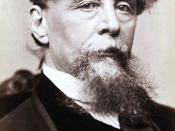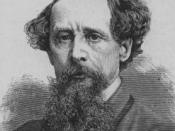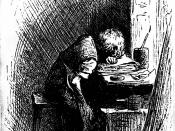Realism as a genre is defined by a broad set of conventions and stereotypical character development techniques. Charles Dickens' Great Expectations uses a variety of these realistic conventions, including an omniscient narrator, a linear narrative, working and lower class characters, regional dialects and a moral undercurrent. These techniques all help to construct a realistic representation of 19th century England, however the characters in Great Expectations are not always developed based on purely realist principles.
William Dean Howells writes that 'realism is nothing more and nothing less than the truthful treatment of material' (Howells 1989) so Realism is roughly defined as a faithful representation of reality or a verisimilitude. Dickens tries to recreate life and all its details to the reader, but he also uses techniques from a variety of genre conventions when creating his characters.
'Joe was a fair man, with curls of flaxen hair on each side of his smooth face, and with eyes of such a very undecided blue...
He was a mild, good-natured, sweet-tempered, easy-going, foolish, dear fellow'Dickens uses an almost excessive amount of detail when describing his characters, especially when he is introducing them. This flood of information is used to create a 'reality effect' which makes the reader feel like they know a great deal about the character in question very quickly. Much of the information is superfluous, almost irrelevant to the development of the story or the character in question, such as the description of Joe's blue eyes. Initially Dickens give us a variety of information about a character but fills much of that information with common stereotypes, this encourages the reader to make judgements about that character. It also means that unique character traits are established immediately, Pip is firstly "the small bundle of shivers", conveying his age, size, and his emotional fragility.


